| Weight | 1 lbs |
|---|---|
| Dimensions | 9 × 5 × 2 in |
| host | rabbit |
| isotype | IgG |
| clonality | polyclonal |
| concentration | 1 mg/mL |
| applications | ICC/IF, WB |
| reactivity | CKIIα |
| available sizes | 100 µg |
rabbit anti-CKII α polyclonal antibody 7489
$518.00
Antibody summary
- Rabbit polyclonal to CKII α
- Suitable for: WB,IP,IHC
- Isotype: Whole IgG
- 100 µg
rabbit anti-CKII α polyclonal antibody 7489
| antibody |
|---|
| Tested applications WB,IHC,IHC,IP |
| Recommended dilutions Western Blot: 0.3 - 1 ug/ml. Immunoprecipitation: Use Catalog Number 13030. |
| Immunogen Synthetic peptide representing a portion of the protein located within exons 12 and 13 (LocusLink ID 1457). |
| Size and concentration 100µg and lot specific |
| Form liquid |
| Storage Instructions Store at 2 - 8°C. Antibody is stable at 2 - 8°C for 1 year. |
| Storage buffer Tris-buffered Saline containing 0.1% BSA and 0. |
| Purity immunogen affinity purification |
| Clonality polyclonal |
| Isotype IgG |
| Compatible secondaries goat anti-rabbit IgG, H&L chain specific, peroxidase conjugated, conjugated polyclonal antibody 9512 goat anti-rabbit IgG, H&L chain specific, biotin conjugated polyclonal antibody 2079 goat anti-rabbit IgG, H&L chain specific, FITC conjugated polyclonal antibody 7863 goat anti-rabbit IgG, H&L chain specific, Cross Absorbed polyclonal antibody 2371 goat anti-rabbit IgG, H&L chain specific, biotin conjugated polyclonal antibody, crossabsorbed 1715 goat anti-rabbit IgG, H&L chain specific, FITC conjugated polyclonal antibody, crossabsorbed 1720 |
| Isotype control Rabbit polyclonal - Isotype Control |
| target relevance |
|---|
| Protein names Casein kinase II subunit alpha (CK II alpha) (EC 2.7.11.1) |
| Gene names CSNK2A1,CSNK2A1 CK2A1 |
| Protein family Protein kinase superfamily, Ser/Thr protein kinase family, CK2 subfamily |
| Mass 45144Da |
| Function FUNCTION: Catalytic subunit of a constitutively active serine/threonine-protein kinase complex that phosphorylates a large number of substrates containing acidic residues C-terminal to the phosphorylated serine or threonine (PubMed:11239457, PubMed:11704824, PubMed:16193064, PubMed:18411307, PubMed:18583988, PubMed:18678890, PubMed:19188443, PubMed:20545769, PubMed:20625391, PubMed:22017874, PubMed:22406621, PubMed:24962073, PubMed:30898438, PubMed:31439799). Regulates numerous cellular processes, such as cell cycle progression, apoptosis and transcription, as well as viral infection (PubMed:12631575, PubMed:19387551, PubMed:19387552). May act as a regulatory node which integrates and coordinates numerous signals leading to an appropriate cellular response (PubMed:12631575, PubMed:19387551, PubMed:19387552). During mitosis, functions as a component of the p53/TP53-dependent spindle assembly checkpoint (SAC) that maintains cyclin-B-CDK1 activity and G2 arrest in response to spindle damage (PubMed:11704824, PubMed:19188443). Also required for p53/TP53-mediated apoptosis, phosphorylating 'Ser-392' of p53/TP53 following UV irradiation (PubMed:11239457). Phosphorylates a number of DNA repair proteins in response to DNA damage, such as MDC1, MRE11, RAD9A, RAD51 and HTATSF1, promoting their recruitment to DNA damage sites (PubMed:18411307, PubMed:18583988, PubMed:18678890, PubMed:20545769, PubMed:21482717, PubMed:22325354, PubMed:26811421, PubMed:28512243, PubMed:30898438, PubMed:35597237). Can also negatively regulate apoptosis (PubMed:16193064, PubMed:22184066). Phosphorylates the caspases CASP9 and CASP2 and the apoptotic regulator NOL3 (PubMed:16193064). Phosphorylation protects CASP9 from cleavage and activation by CASP8, and inhibits the dimerization of CASP2 and activation of CASP8 (PubMed:16193064). Phosphorylates YY1, protecting YY1 from cleavage by CASP7 during apoptosis (PubMed:22184066). Regulates transcription by direct phosphorylation of RNA polymerases I, II, III and IV (PubMed:12631575, PubMed:19387550, PubMed:19387551, PubMed:19387552, PubMed:23123191). Also phosphorylates and regulates numerous transcription factors including NF-kappa-B, STAT1, CREB1, IRF1, IRF2, ATF1, ATF4, SRF, MAX, JUN, FOS, MYC and MYB (PubMed:12631575, PubMed:19387550, PubMed:19387551, PubMed:19387552, PubMed:23123191). Phosphorylates Hsp90 and its co-chaperones FKBP4 and CDC37, which is essential for chaperone function (PubMed:19387550). Mediates sequential phosphorylation of FNIP1, promoting its gradual interaction with Hsp90, leading to activate both kinase and non-kinase client proteins of Hsp90 (PubMed:30699359). Regulates Wnt signaling by phosphorylating CTNNB1 and the transcription factor LEF1 (PubMed:19387549). Acts as an ectokinase that phosphorylates several extracellular proteins (PubMed:12631575, PubMed:19387550, PubMed:19387551, PubMed:19387552). During viral infection, phosphorylates various proteins involved in the viral life cycles of EBV, HSV, HBV, HCV, HIV, CMV and HPV (PubMed:12631575, PubMed:19387550, PubMed:19387551, PubMed:19387552). Phosphorylates PML at 'Ser-565' and primes it for ubiquitin-mediated degradation (PubMed:20625391, PubMed:22406621). Plays an important role in the circadian clock function by phosphorylating BMAL1 at 'Ser-90' which is pivotal for its interaction with CLOCK and which controls CLOCK nuclear entry (By similarity). Phosphorylates CCAR2 at 'Thr-454' in gastric carcinoma tissue (PubMed:24962073). Phosphorylates FMR1, promoting FMR1-dependent formation of a membraneless compartment (PubMed:30765518, PubMed:31439799). May phosphorylate histone H2A on 'Ser-1' (PubMed:38334665). {ECO:0000250|UniProtKB:P19139, ECO:0000269|PubMed:11239457, ECO:0000269|PubMed:11704824, ECO:0000269|PubMed:16193064, ECO:0000269|PubMed:18411307, ECO:0000269|PubMed:18583988, ECO:0000269|PubMed:18678890, ECO:0000269|PubMed:19188443, ECO:0000269|PubMed:20545769, ECO:0000269|PubMed:20625391, ECO:0000269|PubMed:21482717, ECO:0000269|PubMed:22017874, ECO:0000269|PubMed:22184066, ECO:0000269|PubMed:22325354, ECO:0000269|PubMed:22406621, ECO:0000269|PubMed:23123191, ECO:0000269|PubMed:24962073, ECO:0000269|PubMed:26811421, ECO:0000269|PubMed:28512243, ECO:0000269|PubMed:30699359, ECO:0000269|PubMed:30765518, ECO:0000269|PubMed:30898438, ECO:0000269|PubMed:31439799, ECO:0000269|PubMed:35597237, ECO:0000269|PubMed:38334665, ECO:0000303|PubMed:12631575, ECO:0000303|PubMed:19387549, ECO:0000303|PubMed:19387550, ECO:0000303|PubMed:19387551, ECO:0000303|PubMed:19387552}. |
| Catalytic activity CATALYTIC ACTIVITY: Reaction=L-seryl-[protein] + ATP = O-phospho-L-seryl-[protein] + ADP + H(+); Xref=Rhea:RHEA:17989, Rhea:RHEA-COMP:9863, Rhea:RHEA-COMP:11604, ChEBI:CHEBI:15378, ChEBI:CHEBI:29999, ChEBI:CHEBI:30616, ChEBI:CHEBI:83421, ChEBI:CHEBI:456216; EC=2.7.11.1; Evidence={ECO:0000269|PubMed:18411307, ECO:0000269|PubMed:18583988, ECO:0000269|PubMed:18678890, ECO:0000269|PubMed:20545769, ECO:0000269|PubMed:20625391, ECO:0000269|PubMed:21482717, ECO:0000269|PubMed:22017874, ECO:0000269|PubMed:22184066, ECO:0000269|PubMed:23123191, ECO:0000269|PubMed:28512243, ECO:0000269|PubMed:30699359, ECO:0000269|PubMed:30898438, ECO:0000269|PubMed:31439799}; PhysiologicalDirection=left-to-right; Xref=Rhea:RHEA:17990; Evidence={ECO:0000269|PubMed:18411307, ECO:0000269|PubMed:18583988, ECO:0000269|PubMed:18678890, ECO:0000269|PubMed:20545769, ECO:0000269|PubMed:21482717, ECO:0000269|PubMed:23123191, ECO:0000269|PubMed:28512243, ECO:0000269|PubMed:30699359, ECO:0000269|PubMed:30898438, ECO:0000269|PubMed:31439799, ECO:0000269|PubMed:35597237}; CATALYTIC ACTIVITY: Reaction=L-threonyl-[protein] + ATP = O-phospho-L-threonyl-[protein] + ADP + H(+); Xref=Rhea:RHEA:46608, Rhea:RHEA-COMP:11060, Rhea:RHEA-COMP:11605, ChEBI:CHEBI:15378, ChEBI:CHEBI:30013, ChEBI:CHEBI:30616, ChEBI:CHEBI:61977, ChEBI:CHEBI:456216; EC=2.7.11.1; Evidence={ECO:0000269|PubMed:18411307, ECO:0000269|PubMed:18583988, ECO:0000269|PubMed:18678890, ECO:0000269|PubMed:20625391, ECO:0000269|PubMed:22325354, ECO:0000269|PubMed:31439799}; PhysiologicalDirection=left-to-right; Xref=Rhea:RHEA:46609; Evidence={ECO:0000269|PubMed:18411307, ECO:0000269|PubMed:18583988, ECO:0000269|PubMed:18678890, ECO:0000269|PubMed:31439799}; |
| Subellular location SUBCELLULAR LOCATION: Nucleus {ECO:0000269|PubMed:23123191, ECO:0000269|PubMed:24962073}. |
| Tissues TISSUE SPECIFICITY: Expressed in gastric carcinoma tissue and the expression gradually increases with the progression of the carcinoma (at protein level). {ECO:0000269|PubMed:24962073}. |
| Structure SUBUNIT: Heterotetramer composed of two catalytic subunits (alpha chain and/or alpha' chain) and two regulatory subunits (beta chains). The tetramer can exist as a combination of 2 alpha/2 beta, 2 alpha'/2 beta or 1 alpha/1 alpha'/2 beta subunits. Also part of a CK2-SPT16-SSRP1 complex composed of SSRP1, SUPT16H, CSNK2A1, CSNK2A2 and CSNK2B, which forms following UV irradiation. Interacts with RNPS1. Interacts with SNAI1. Interacts with PML (isoform PML-12). Interacts with CCAR2. Interacts with HIRIP3 (PubMed:38334665). {ECO:0000269|PubMed:11092945, ECO:0000269|PubMed:11239457, ECO:0000269|PubMed:11574463, ECO:0000269|PubMed:12393879, ECO:0000269|PubMed:15684395, ECO:0000269|PubMed:19923321, ECO:0000269|PubMed:20625391, ECO:0000269|PubMed:22406621, ECO:0000269|PubMed:24962073}. |
| Post-translational modification PTM: Phosphorylated at Thr-344, Thr-360, Ser-362 and Ser-370 by CDK1 in prophase and metaphase and dephosphorylated during anaphase. Phosphorylation does not directly affect casein kinase 2 activity, but may contribute to its regulation by forming binding sites for interacting proteins and/or targeting it to different compartments. {ECO:0000269|PubMed:7592773}. |
| Involvement in disease DISEASE: Okur-Chung neurodevelopmental syndrome (OCNDS) [MIM:617062]: An autosomal dominant neurodevelopmental disorder characterized by developmental delay, intellectual disability, behavioral problems, hypotonia, speech problems, microcephaly, pachygyria and variable dysmorphic features. {ECO:0000269|PubMed:27048600}. Note=The disease is caused by variants affecting the gene represented in this entry. |
| Target Relevance information above includes information from UniProt accession: P68400 |
| The UniProt Consortium |
Data
Publications
| pmid | title | authors | citation |
|---|---|---|---|
| We haven't added any publications to our database yet. | |||
Protocols
| relevant to this product |
|---|
| Western blot IHC |
Documents
| # | SDS | Certificate | |
|---|---|---|---|
| Please enter your product and batch number here to retrieve product datasheet, SDS, and QC information. | |||
Only logged in customers who have purchased this product may leave a review.



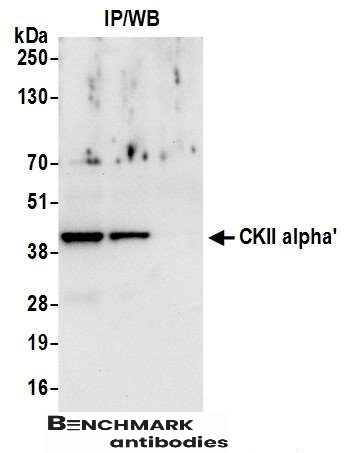

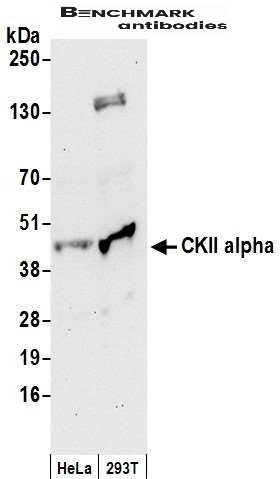

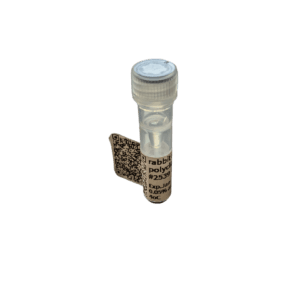



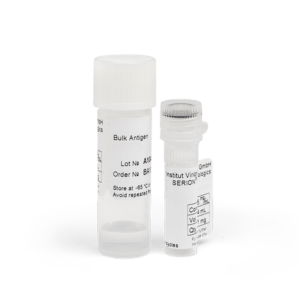
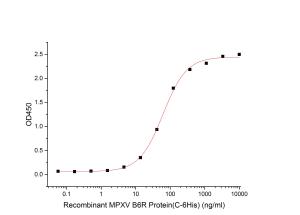
Reviews
There are no reviews yet.